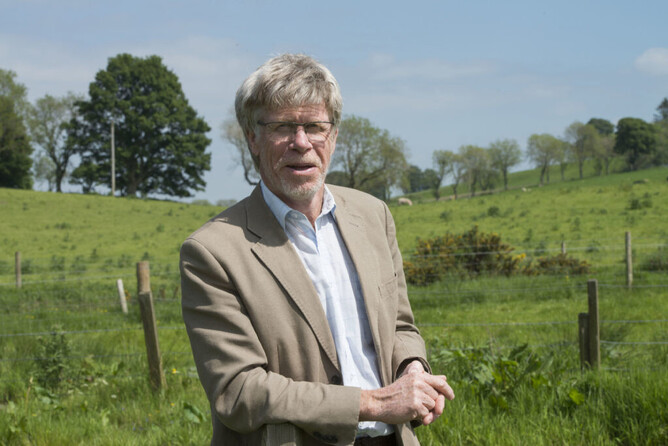It was always Trevor Cook’s intention to complete an agricultural science degree and head back home to run the family farm, but the call of a vet degree was strong.
These days, Trevor is a rural consultant based in Fielding, and his veterinary degree comes in handy, weaving an animal health focus into his consulting. It is just one aspect of farming, which Trevor says is becoming increasingly complex and volatile.
Changes to regulations and the political landscape affect farmers in many ways, but Trevor urges that these are not insurmountable – rather “inconvenient and uncomfortable”.
The bigger risk to farmers is climate change and climate uncertainty, because that leads to fluctuating grass growth: “[We have an] increasingly variable climate which therefore means an increasingly unpredictable pasture growth curve.
“It's not necessarily that it will grow less, it's that the pattern of growth is changing. That variability is a major challenge ahead...we call them challenges as much as risks.”
The challenge of unpredictability
With droughts and big dries occurring more frequently, the only thing farmers can be certain about is the unpredictability in terms of how much grass is going to grow on farm each year.
“The change in pasture growth rate patterns is now embedded enough that farmers need to be thinking about their systems and how their systems can cope without them being a disaster every time they happen,” explains Trevor.
“Most farmers probably still treat [a drought] as a disaster, whereas for those good guys, it's all about redesigning their systems to make them less exposed to such big variables.”
Planning for uncertainty is important for those risk months to ensure that when the unthinkable happens, farmers have already pre-empted it and have a plan in place to mitigate the effects and get through.
Trevor believes that most farmers are not aware of what the worst-case scenarios could be, they just react to it when it happens. And that is where FARMAX comes in, helping farmers be proactive, not reactive. FARMAX helps by modelling the different scenarios that could occur and showing the best path forward.
Being proactive with FARMAX
“What if January, February, March grow half of what we've actually got in there as anticipated? Predict what's going to happen and then start playing around with the things that reduce the impact of that. Is it selling lambs early? It is just slowing growth rates of bulls down? Being aware of the levers that are going to have the biggest effect,” says Trevor.
"FARMAX enables you to model what each year could look like in that process of change to end up where you want to be."
- Trevor Cook, Totally Vets
The stress and panic that comes during unexpected situations can have a blinding effect, with people losing sight of what they are actually able to do: “You get a lot of calls when people are really in trouble...Logically when that's the case there aren't a lot of options, but in actual fact it's surprising how often there are options that they just haven't been able to see because they're so consumed with looking for rain,” he explains.
Farmers can minimise risk by looking at changes that will optimise profitability, but at the same time accepting that not all policies on the farm can be the most profitable; you've always got to have some that can support the others and be happy that they are doing just that.
Trevor appreciates how effective FARMAX is at showing what policies are going generate the most profit on a whole farm basis: “It is a useful tool because when we're going through a process of change, you aren't going to be here and change to there in a year - it might be three or four or five years, so FARMAX enables you to model what each year could look like in that process of change to end up where you want to be.
“We can use FARMAX to model the pathway there. We don't do that enough. We'll do a financial budget for getting there, but you're much less likely to do the physical budget of getting there.”
New features in FARMAX will go a long way in creating certainty for farmers about what the future of their farm looks like. Specifically, the greenhouse gas emissions calculations and farmlet features “will be massive in being able to apply FARMAX to be more accurate with the areas that it's being modelled,” says Trevor.

